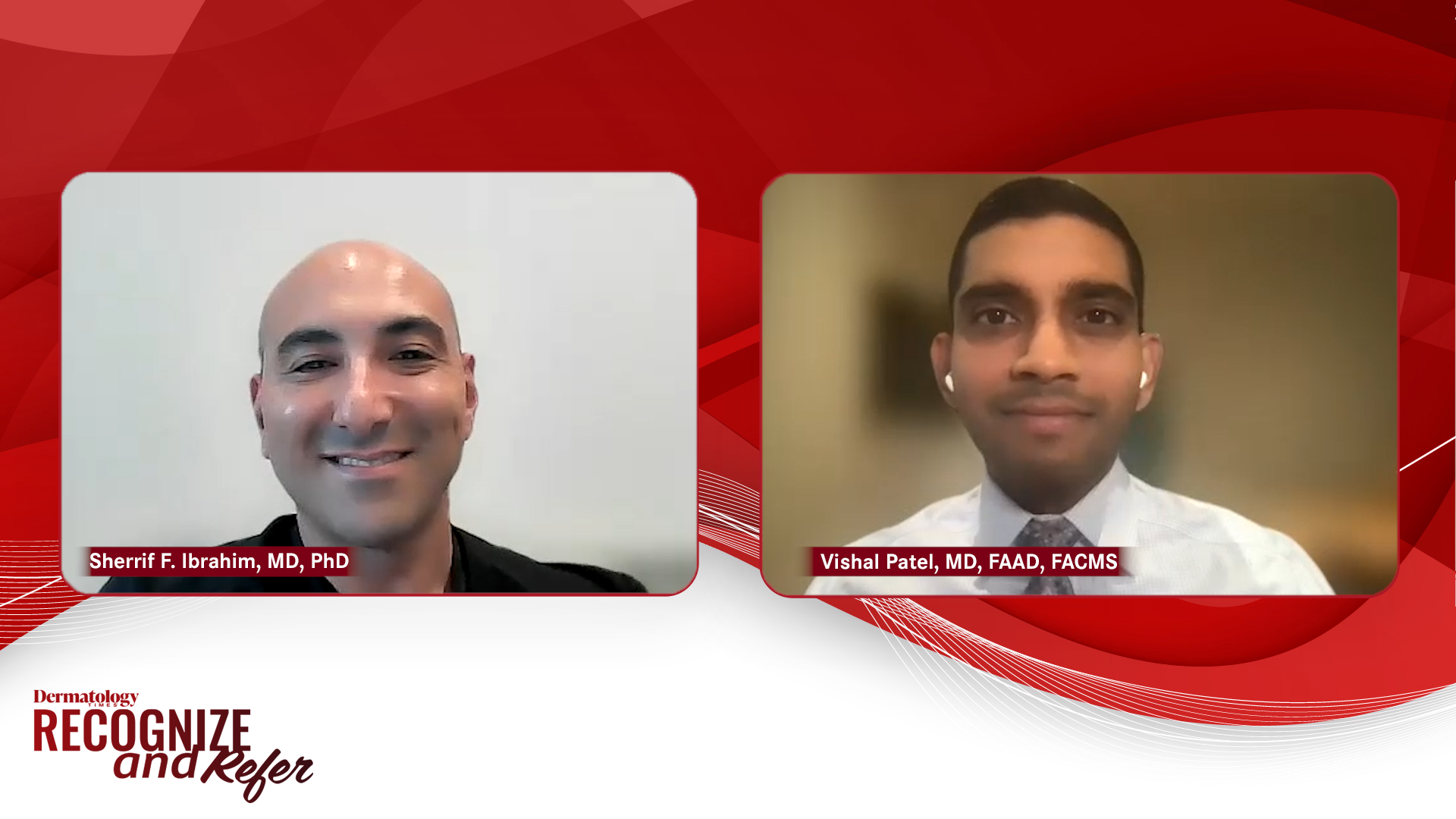- Acne
- Actinic Keratosis
- Aesthetics
- Alopecia
- Atopic Dermatitis
- Buy-and-Bill
- COVID-19
- Case-Based Roundtable
- Chronic Hand Eczema
- Chronic Spontaneous Urticaria
- Drug Watch
- Eczema
- General Dermatology
- Hidradenitis Suppurativa
- Melasma
- NP and PA
- Pediatric Dermatology
- Pigmentary Disorders
- Practice Management
- Precision Medicine and Biologics
- Prurigo Nodularis
- Psoriasis
- Psoriatic Arthritis
- Rare Disease
- Rosacea
- Skin Cancer
- Vitiligo
- Wound Care
News
Article
Undersleeping is a Potential Risk Factor for Cutaneous Melanoma
Author(s):
Key Takeaways
- Undersleeping is identified as a potential risk factor for cutaneous melanoma through Mendelian randomization analysis.
- No significant correlation was found between smoking, alcohol consumption, sedentary behavior, and melanoma risk.
Two-sample Mendelian randomization analysis explored lifestyle factors such as sleep, smoking, alcohol consumption, and sedentary behavior.
Image Credit: © dermnetnz.org

Researchers explored the genetic relationship between poor lifestyle habits and the risk of developing cutaneous melanoma.1 Two-sample Mendelian randomization analysis showed that undersleeping is causally associated with the risk of melanoma. The connection between sleep and cutaneous melanoma has not been studied prior to this literature.
Investigators applied Mendelian randomization by using the genome‐wide association studies (GWAS) statistics of poor lifestyle habits and cutaneous melanoma. These habits were identified as undersleeping, smoking, alcohol consumption, and sedentary behavior. The GWAS data was downloaded from the IEU OpenGWAS project and GWAS Catalog. The study was approved by the Ethics Committee of Shengli Oilfield Central Hospital.
Mendelian randomization, which uses single-nucleotide polymorphisms (SNPs), is advantageous for this type of literature, as it can simulate randomized controlled trials in observational environments. Investigators chose a relatively soft threshold of p < 5 × 10−6. Suitable SNPS were selected based on the linkage disequilibrium (LD, kb = 10000, r2 > 0.01). Five MR approaches were utilized, including inverse variance weighted (IVW), weighted median, simple mode, MR-Egger, and weighted mode.
Undersleeping was identified as a potential connection to cutaneous melanoma, based on the IVW result (OR = 1.018, 95% CI = 1.002–1.033, p = 0.025). Similar findings were observed in the weighted median (OR = 1.018, 95% CI = 0.997–1.039, p = 0.092), simple mode (OR = 1.027, 95% CI = 0.991–1.065, p = 0.174) and weighted mode (OR = 1.027, 95% CI = 0.992–1.064, p = 0.158) analyses.
Interestingly, those who undersleep and have been diagnosed with sleep disorders are more likely to develop other cancers, such as colorectal cancer and ovarian cancer.2 There was no significant correlation between smoking, alcohol consumption, sedentary behavior, and cutaneous melanoma, according to all five Mendelian randomization methods. This research does have some limitations, including potential bias, small sample sizes, and a lack of racial diversity, as this data only focused on the European population.
Cutaneous melanoma, which originates from melanocytes in the skin, accounts for 73% of the total mortality rate in skin tumors, and the global incidence continues to increase.3 Treatments include surgery, chemotherapy, targeted therapy, and immunotherapy, but the prognosis is still poor. Factors such as ultraviolet radiation, friction, dysplastic nevi, sunburns, and radiation may contribute to the development of cutaneous melanoma. A recent prospective study explored the association between commonly prescribed photosensitizing drugs, estrogen, and diuretics and the risk of developing skin cancer in women.4 Despite this, the etiology and risk factors of cutaneous melanoma are not yet fully understood, emphasizing the need for further research.
“Therefore, the results of this study have potential significant clinical and public health implications,” the authors wrote. “Undersleeping is a serious and urgent global problem that needs to be addressed.”
References
1. Liu, X., Luan, W., Fan, S., & Liu, T. (2025). Association Between Poor Lifestyle Habits and Cutaneous Melanoma Risk: A Mendelian Randomization Study. Clinical, Cosmetic and Investigational Dermatology, 18, 687–697. https://doi.org/10.2147/CCID.S506547
2. Porcacchia AS, Pires GN, Andersen ML, Tufik S. A cross-sectional analysis of the association between sleep disorders and cancer using data from the National Health and Nutrition Examination Survey (NHANES) 2005-2014. J Clin Sleep Med. 2024;20(4):515-520. doi:10.5664/jcsm.10932
3. Abbas O, Miller DD, Bhawan J. Cutaneous malignant melanoma: update on diagnostic and prognostic biomarkers. Am J Dermatopathol. 2014;36(5):363-379. doi:10.1097/DAD.0b013e31828a2ec5
4. Christensen GB, Kappelin J, Sandgren J, Nielsen K, Ingvar Å. Photosensitizing drugs and risk of skin cancer in women - a prospective population-based study. Photodermatol Photoimmunol Photomed. 2025;41(2):e70013. doi:10.1111/phpp.70013
Newsletter
Like what you’re reading? Subscribe to Dermatology Times for weekly updates on therapies, innovations, and real-world practice tips.















